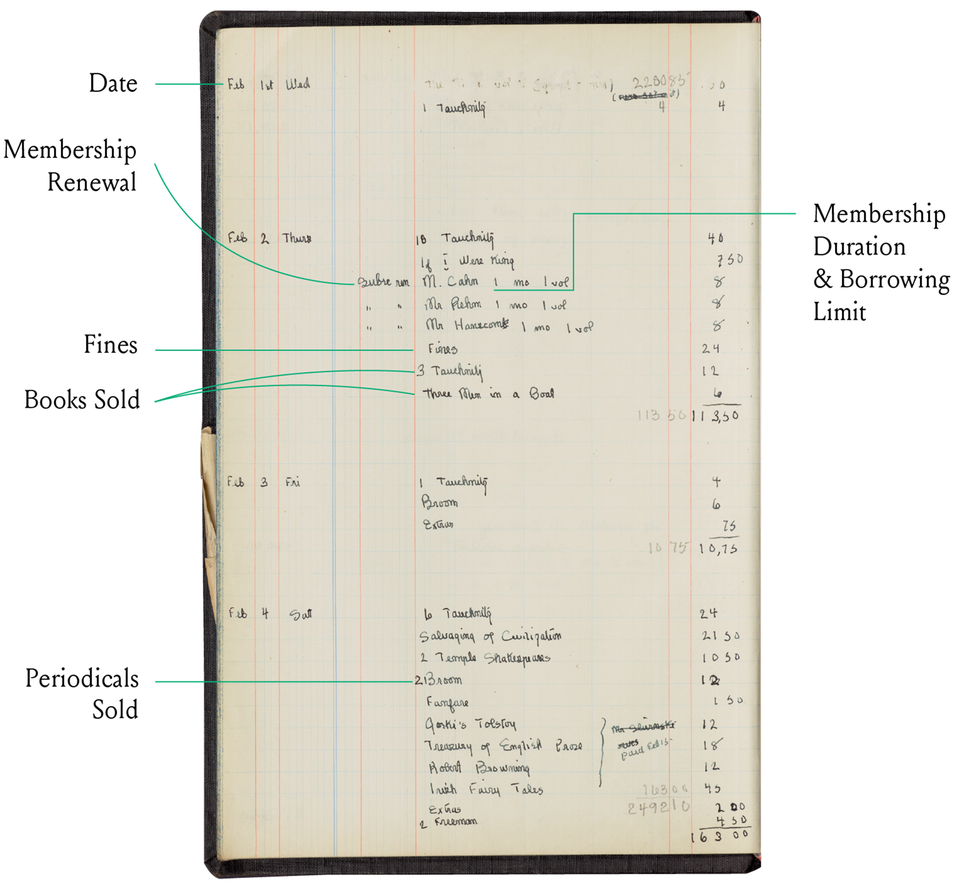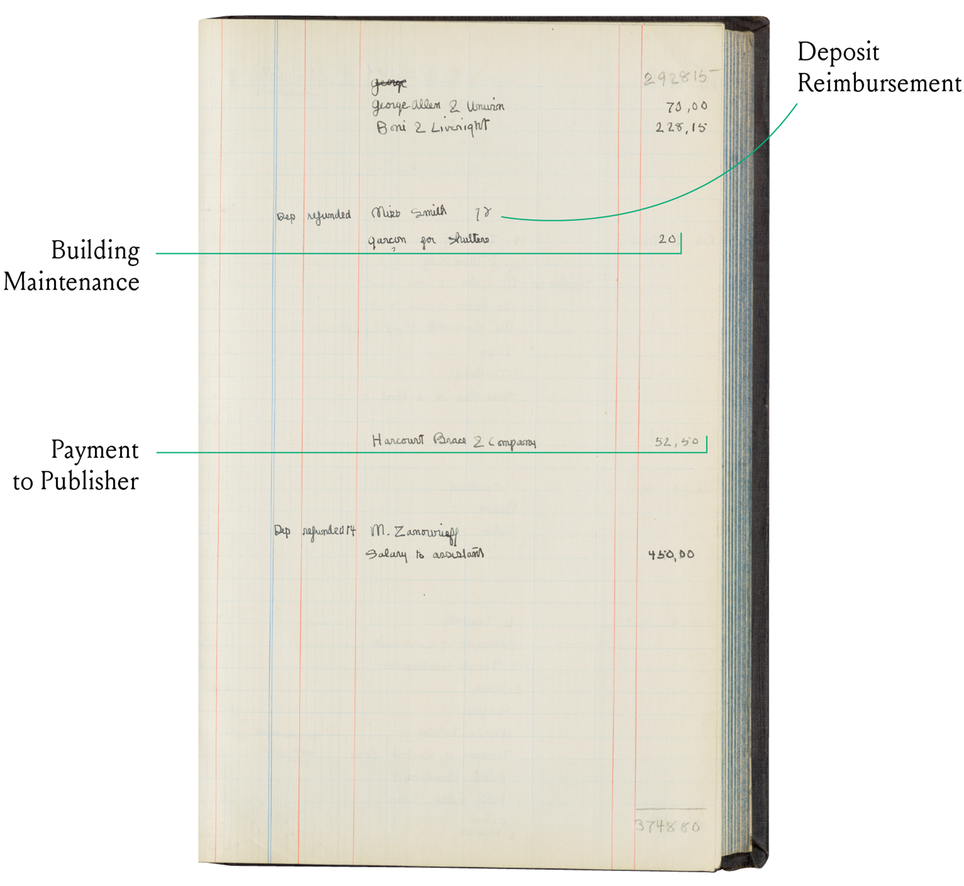

The Shakespeare and Company Project is based on three sources from the Sylvia Beach Papers at Princeton University: lending library cards, logbooks, and address books.
Sylvia Beach used logbooks to record the daily revenue and expenses at Shakespeare and Company. The two-page entry for February 2, 1922—the day James Joyce's Ulysses was published!—is representative. One page (the verso) shows sales: twenty-one books published by Tauchnitz Editions, a German publisher of inexpensive editions of English-language books; Justin Huntly McCarthy’s If I Were King (1901) and Jerome K. Jerome’s Three Men in a Boat (1889); and three membership renewals. The entry also shows revenue from lending library fines. The day's total: 113.50 francs. The other page (the recto) shows expenses—90.50 francs: a reimbursement for a lending library membership; building maintenance (“garçon for shutters”); and a payment to the publisher Harcourt Brace. Later in the week, Shakespeare and Company sold issues of the journal Broom and an array of books, including Maxim Gorky’s Reminiscences of Leo Nicolayevitch Tolstoi (1919, translation 1920), published by Leonard and Virginia Woolf’s Hogarth Press.
By detailing every lending library membership, renewal, and reimbursement, the logbooks supplement the information on the lending library cards. Monsieur Cahn, for example, does not have an extant lending library card. But from the logbooks, we learn that he became a member on December 27, 1919 and renewed seven times before being reimbursed for his deposit on February 22, 1922. We also learn what kind of membership he purchased and how much he paid: “1 mo 1 vol” refers to a one-month membership entitling him to borrow one volume at a time. Finally, from a later logbook, we learn his first name: Sylvain.
The logbooks vary in format and scope. Some are hardcover ledger books that cover a year. Others are paperback notebooks that cover a few months. Occasionally, the dates of two logbooks overlap. (Beach recopied and revised logbooks maintained by her assistants.) Beach sometimes kept separate logbooks for different transactions: one for lending library business and sales of books from major presses, and one for sales of Ulysses, books from small presses, and magazines. Despite these differences, the organization of the logbooks is consistent: Beach lists revenue on one page and expenses on the other, and provides a tally at the end of the day.
The Shakespeare and Company Project draws from sixty-six separate logbooks, which include information about 13,039 memberships, renewals, and reimbursements. Some logbooks have been lost—if they ever existed. The following chart represents the gaps:
Gaps in logbook coverage, 1919 – 1941
The Project uses other sources from the Beach Papers to compensate for these gaps. But even with the gaps, the logbooks provide a broad portrait of lending library membership and how it changed between 1919 and 1941.
The Project makes the logbooks available via a digital exhibition hosted by Princeton University Library and as PDFs on Google Drive. One logbook is held by the Harry Ransom Center at the University of Texas and thus not available via the Project.
Cite this document
“Logbooks.” Shakespeare and Company Project, version 1.6.1. Center for Digital Humanities, Princeton University. November 20, 2019. http://shakespeareandco.princeton.edu/sources/logbooks/. Accessed May 15, 2024.

